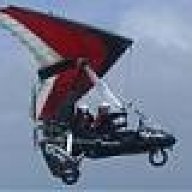Men in microlight crash drunk - CAA
Thu, 19 Nov 2009
Two men who died in a microlight crash in northern Hawke's Bay last year were drunk, a Civil Aviation Authority (CAA) investigation has found.
Each was said to have downed 20 beers before taking to the air, the investigation said today.
Darren John McNay, 39, and Antony Donald Bell, 30, both of Wairoa, left Wairoa Aerodrome in the microlight about 3.15am on May 25.
Mr McNay, a pilot with 220 flight hours, and Mr Bell, an instructor with 560 flight hours, died after the microlight crashed about 400 metres from the runway. The two men had been drinking at a party before taking the microlight out in the dark.
A third person, who had also been at the party, raised the alarm, after they did not return.
Searchers found the wreckage about 7.30am.
Both men were heavily intoxicated at the time of the crash, the CAA report said.
Mr Bell's blood alcohol level was 320 milligrams per 100 millilitres of blood and Mr McNay's 236 milligrams. The legal limit for driving a car is 80 milligrams. Tests also indicated Mr McNay had used cannabis before the flight.
Their friend, who raised the alarm, told police they had drunk about 20 beers each before the flight.
Strong winds, passing rain and poor visibility created unsuitable conditions for the plane to be flying, the report said.
"This would have been a challenging flight even if the instructor and the pilot's performance had not been impaired.''
Mr McNay had no night flying experience and Mr Bell, though previously rated to fly at night, was not at the time certified to carry passengers or instruct in night flying. The plane was not certified to fly at night, the report said.
"It is probable that the pilot and the instructor became spatially disorientated after losing reference to the ground lights and/or flying into low cloud or rain.''
A post mortem found both men died from injuries sustained in the impact, which likely happened on their return to the runway, the report said.



